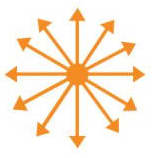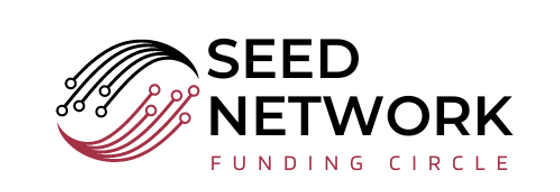Funding circles represent a simple yet powerful way to improve donor coordination across cause areas. We at AIM Grantmaking have recently published a Funding Circles Guide, explaining when they can be useful, what constitutes a good funding circle, and how to start one.
Who this is for: We invite funders to have a read and consider joining an existing circle or setting one up in their preferred cause area to improve coordination in their field, facilitate decision-making and comprehensive coverage, and save time and effort on streamlined application processes for both applicants and funders.
Background: In writing this guide, we relied on our experience setting up five AIM Funding Circles over the past year, focusing on diverse areas like global health & development, mental health, animal welfare, meta, and seed stage charities.
Potential next steps: If you're interested in learning more about funding circles or discussing how they might fit into your philanthropic strategy, we'd be happy to connect. Feel free to reach out for a chat to joey@charityentrepreneurship.com
If you would enjoy guiding our funding circles, consider applying to our Philanthropic Programs Director position, open until November 3rd.
Purpose of a funding circle
Funding circles represent a simple yet powerful way to improve donor coordination across cause areas. This is a brief guide to why funding circles are needed, what constitutes a good funding circle, and how to start one.
What does an ideal funding structure look like?
The funding structures in most cause areas leave plenty of room for improvement. Funders don’t tend to have a deep awareness of each other, information sharing is limited, and great organizations often fall through the cracks.
A far more ideal structure would be one with a clear pathway for organizations to scale up, moving from smaller funders to larger ones. A diverse range of informed funders would share notes and information with each other. This would enable them to notice gaps between them and avoid missed opportunities. Shared information and perspective would mean their scopes would overlap somewhat, so that high impact organizations in their cause area would always get the necessary funding.
The for-profit sector often does a better job of this with clear seed, series A,B,C rounds and coordinated investment rounds. Although structures like this are less common in nonprofits, there are some established systems which can reliably increase donor coordination and thus impact. One structure that does these things well is a funding circle. Funding circles can address these challenges and make philanthropy significantly more effective in a few key ways:
- They provide a centralized point of contact for grant seekers, simplifying the application process.
- They facilitate information sharing among funders, leading to more informed decision-making.
- They help ensure comprehensive coverage of a cause area, reducing gaps and overlaps in funding.
- They streamline the funding process, benefiting both grantors and grantees.
What is a funding circle?
Funding circles are collaborative networks of philanthropists and foundations that focus on specific cause areas (or sometimes other key aspects, like NGO size). These groups vary in size and structure, ranging from large networks with hundreds of members to small, tightly-knit groups of a few funders. The level of coordination within these circles can differ significantly, with some sharing application processes and funding pools, while others maintain looser connections through informal communication channels like Slack, but don’t do joint funding.
Key Components of a Funding Circle
Establishing a funding circle requires a few essential elements, within which there is a lot of room for variation:
Membership Criteria
To build a funding circle you need a methodology for who would be a good fit to coordinate with. The most productive conversations come from funders who support similar areas or have more aspects of shared methodologies. There can also be more clear and logistical requirements, such as:
- Demonstrated commitment to the specific cause area
- Minimum annual donation amount to a given area
- Total annual philanthropic contributions
- Recommendation from existing members
- Relevant expertise or experience in the field
The highest temptation with membership is to allow in far too many actors or far too few: a funding circle with 2 people can lead to very high levels of coordination, but you are likely letting a lot of actors fall by the wayside; but on the other hand, a collaboration of 200 is only ever going to be able to coordinate in a fairly shallow way. The purpose of the circle will largely determine the best number of members to facilitate that purpose.
If you are unsure about numbers, we have found a sweet spot in the 7-14 core members range (with room to include more members in an “outer circle”, for more on this see below). This gives enough diversity of views and actors to really benefit from coordination, but also makes it likely that you will all co-grant with each other. It also is a feasible number to still have the bulk of people actively participate in a single call or meeting.
The Circle’s Grantmaking Process
The grantmaking process you want to run together and the level of coordination that process requires will play a major role in shaping your funding circle. Some key strategic decisions in this area include:
- Open vs closed application rounds
- Which application process stages are shared between members
- Shared due diligence
- Communal resources, for example, shared funding or staff
- How often you meet or otherwise communicate about the opportunities
For example, a circle’s grantmaking process could look like the following, including three conversations throughout the round for funders to discuss and coordinate with each other:
- An open application round twice a year asking all applicants the same questions
- Shared initial screening done by 2 designated circle members
- Separate in-depth reviews by each funder, picking their own charities to deep dive
- Final decision-making and funding allocation, with each funder making their own final calls
Common question: When should you hire a staff for a funding circle?
The three main factors that lean people towards having staff operating or coordinating the funding circle are 1) amount of money moved through the circle, 2) available hours of the foundations participating in the circle, and 3) how time-intensive the granting process is. For example, if you have 8 members each working a full-time job, but donating seven figure sums in their spare time, having a higher coordination circle with a full-time staff would be well worthwhile. On the other hand, if the total needed amount of work is less than 10 hours a week or can be easily absorbed by a few of the members who have full-time staff, getting a staff member to coordinate might not be worth the hassle of hiring. |
Examples from the Field: Funding Circles in Action
Funding circles operate on a spectrum of coordination levels. Neither of the higher vs lower coordination circles are inherently better, but they do serve different purposes and member preferences, thus it is common for someone to be a member of both a smaller higher coordination group as well as a member of a larger lower coordination group. Below are some real-world examples of circles taking fairly different approaches. There are of course far more funding circles beyond these, but I have either directly been a member of these, or have heard positive things from more than three of their members.
Lower Coordination Examples
| Farmed Animal Funders (FAF) | |
 | FAF is a network of funders dedicated to ending factory farming. Members range from those donating $250,000 annually to those contributing over $20 million. The group employs a small staff to assist with research, vetting opportunities, and general coordination. This structure helps reduce the risk of duplicate funding and helps identify promising opportunities that might otherwise be overlooked. |
| Big Bang Philanthropy | |
 | This group focuses on global health and development. Big Bang Philanthropy has an interesting approach: if an organization receives support from five or more Big Bang members, it becomes a "Big Bang charity." New members of the network are expected to provide significant support to at least five of these designated charities, but there is no formalized shared pipeline. |
Mid-Level Coordination Examples
| Agency Fund | |
 | The Agency Fund represents a step up in coordination, focusing on improving human agency. While some members operate fairly independently, they do have a shared application pipeline, and some members even pool their funding, which is then directed by the staff of the Agency Fund itself. |
| Charity Entrepreneurship Seed Network | |
| This network provides initial seed funding to charities graduating from the Charity Entrepreneurship incubation program. The deal flow pipeline is entirely shared, as is the applicant information that members receive. They conduct two rounds per year, featuring 5-8 charities per round. Funders then decide whether and which of these they want to fund. Coordination includes a couple of calls and events annually, but donor-to-donor coordination remains relatively minimal and final decisions are independently made. | |
Higher Coordination Examples
| AIM Mental Health Funding Circle | |
| The AIM Mental Health Funding Circle operates with a high level of coordination. They maintain a shared pipeline of opportunities, but without pooled funding: Each funder independently decides what they consider to be most impactful to support. The circle holds regular conversations and meetings. A unique feature is their streamlined due diligence process, where often a single funder (typically the one providing the most funding to a particular opportunity) takes the lead on vetting. | |
| Strategic Animal Funding Circle | |
| The AIM Strategic Animal Funding Circle is a small group with a focus on smaller and newer animal organizations. The circle has regular open rounds with high levels of overlap in due diligence, and members focus on neglected areas within the animal space (small farmed animals, farmed animals in LMICs). If FAF were a conference, this circle might be closer to a dinner party. | |
These circles can be great fits to join if they are open to new members (in most cases they are) and they fit your philanthropic focus areas. But they all have many shared characteristics and lessons that can also be cross applied to other cause areas and circles.
Starting Your Own Funding Circle
If you’re a funder looking to initiate a funding circle, the basic process consists of the following steps:
- Connect with like-minded funders through events, networks, or professional circles.
- Establish a core group, ideally with two organizers and about five funders.
- Define your circle's focus and desired level of coordination.
- Create a basic structure for meetings and communication.
- Set up an application process or deal flow system.
Remember, you can start small. One person with time and two more people with funding can be enough to get the process going, although we've found it's often easier to start with two people dedicating time and about five people providing funding.
When thinking of starting a new funding circle, it’s often worth reaching out to funding circles in adjacent spaces in case they can fit your needs - like the ones above - or have members who might also want to join yours.
A Default Structure for Funding Circles
While each circle may have its own operating style, here's a basic structure that we have found to work well:
- 5-10 core funders per circle, plus a larger "outer circle" of (~2-10) funders who receive emails about promising potential grantees, but don't actively participate.
- Two collaborative open application grant rounds per year, each about 2 months.
- Each funder makes independent funding decisions after discussing opportunities with others in the circle.
- The process for each round could look something like this:
- Circle members(s) send out a Request for Proposals (RFP) to relevant networks. Allow one month from RFP to application deadline.
- After the deadline, narrow down applications to the 15-30 most promising.
- Chairs send screened applications to circle members for review. Allow 5-7 days for review.
- First Zoom call: Members discuss applications and assign "point persons" for further due diligence on promising candidates.
- Second Zoom call (2-3 weeks later): Members share due diligence findings and new insights.
- Third Zoom call (2-3 weeks later): Members announce their respective decisions. Chairs promote collaboration and consider efficient donation swaps to save on fees.
Tips for Running a Great Funding Circle
Based on our experience running five funding circles in various areas, here are some cross-applicable lessons:
What Works Well
- Regranting with experts: Some circle members have given re-granting funding to cause area experts who then participate as members. These tend to be both deeply informed and engaged re-granters, allowing for deeper and more informed conversations.
- Light and heavy members: Have 5-12 dedicated core members, but maintain a larger mailing list with a lower bar for involvement. This allows you to share great opportunities more widely. In our experience, the larger network typically contributes around 10-20% of total funding.
- Focus on quality: Focus on people who will have productive conversations. It's okay to tactfully remove members who don't fit well, even if they donate significantly.
- Open rounds: These are crucial for bringing in new grantees and avoiding funding the same organizations every year. Funding circles can handle the workload of open rounds more efficiently than individual funders.
- Narrow scopes: Keeping the circle’s focus relatively narrow allows for alignment among funders, higher quality conversations, and manageable application numbers.
- Consistent communication: Choose a communication medium (Slack, email, monthly meetings, etc.) and stick to it to prevent losing touch.
What Hasn't Worked Well
- Mismatched members: A few ill-fitting members can significantly worsen the experience for everyone. This could be due to aspects like personality conflicts or vast differences in funding amounts. In the end, the quality of interaction is more important than the sheer quantity of members. Many struggling funding circles have become too large or diverse in viewpoints. It is better to start small with aligned members who trust each other's recommendations.
- Overly broad focus: Resist the temptation to cover more ground than you realistically will. It's easier to expand your scope later than it is to narrow it. Start narrow with topic and people, expand later: It's easier to expand your scope and members over time than to narrow it.
- Unbalanced membership: Avoid situations where one member contributes over 50% of total grantmaking.
- Inconsistent transparency preferences: Differing practices regarding public transparency about recipients and explanations for grants can look confusing.
Areas with Mixed or Unclear Results
- Monthly meetings between rounds: These can promote a sense of community and aid coordination, but often suffer from low attendance due to busy schedules.
- Standardized grantee reporting: Usage and associated results have been inconsistent in our experience.
- For-profit grantees: Including these can lead to unique due diligence challenges, as well as some difficulty comparing opportunity promisingness, but can open up new opportunities.
- Institutional members: The effectiveness of including these is still unclear. There are benefits to having more members but institutions typically coordinate in quite different ways than private foundations do.
Conclusion
This is a living document and we expect to update it as we continue to explore and refine this model. We're keen to support others in the philanthropic community who are interested in creating new funding circles or joining or enhancing existing ones and also keen for feedback on what has worked or not worked in other circles.
If you're interested in learning more about funding circles or discussing how they might fit into your philanthropic strategy, we'd be happy to connect. Feel free to reach out for a chat to joey@charityentrepreneurship.com





Executive summary: Funding circles are collaborative networks of philanthropists that improve donor coordination and grantmaking efficiency by sharing information, streamlining applications, and ensuring comprehensive coverage of cause areas.
Key points:
This comment was auto-generated by the EA Forum Team. Feel free to point out issues with this summary by replying to the comment, and contact us if you have feedback.